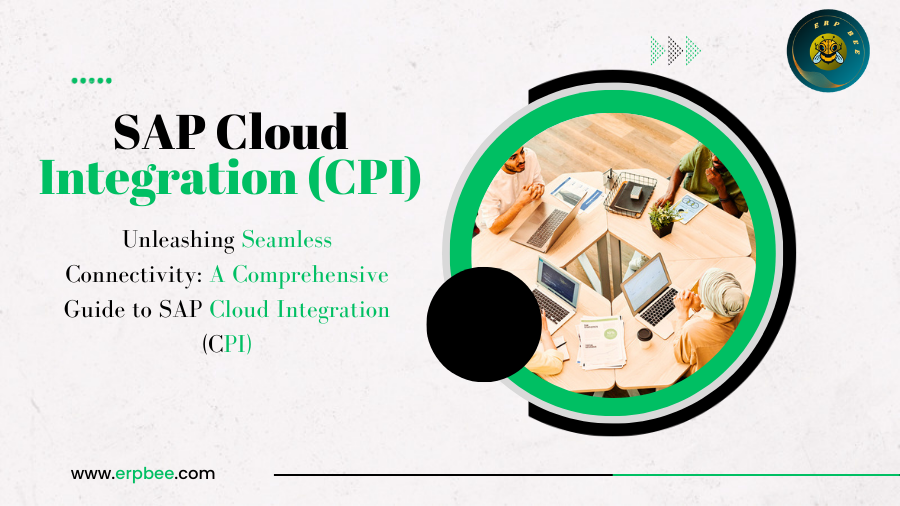Introduction: In the age of cloud computing, businesses are striving for agility, scalability, and efficiency. SAP Cloud Integration, commonly referred to as CPI (Cloud Platform Integration), emerges as a transformative solution that enables seamless data flow and process synchronization between diverse applications and systems. This blog takes a deep dive into the world of SAP Cloud Integration (CPI), exploring its key features, benefits, integration scenarios, and how it empowers businesses to navigate the complexities of the digital era.
SAP Cloud Integration (CPI) Unveiled:
SAP Cloud Integration, part of the SAP Integration Suite, serves as a bridge that connects cloud applications, on-premises systems, and various data sources. CPI simplifies integration processes by providing a unified platform for designing, deploying, and managing integrations. It enables businesses to achieve real-time connectivity, streamline operations, and leverage the power of hybrid landscapes.
Key Features:
- Pre-built Adapters: CPI offers a comprehensive library of pre-built adapters that facilitate connectivity with popular applications, databases, and protocols. This accelerates integration projects and reduces development time.
- Integration Flows: Integration flows in CPI enable businesses to design and orchestrate end-to-end integration scenarios. This includes data mapping, transformations, and routing between different systems and applications.
- Message Monitoring: CPI provides robust monitoring and error handling capabilities, allowing users to track the status of integration flows, identify bottlenecks, and ensure data accuracy.
- Security and Compliance: CPI ensures data security through features such as encryption, secure connections, and compliance with industry standards and regulations.
- Scalability: As a cloud-based solution, CPI offers scalability to accommodate growing data volumes and evolving business needs, ensuring seamless performance.
Benefits of SAP Cloud Integration (CPI):
- Seamless Connectivity: CPI breaks down data silos by enabling seamless connectivity between cloud and on-premises applications, ensuring consistent data flow and real-time synchronization.
- Time and Cost Savings: Pre-built adapters, templates, and reusable integration patterns in CPI reduce development efforts, leading to faster project implementation and cost savings.
- Efficient Data Management: CPI facilitates data mapping, transformation, and enrichment, ensuring that data is accurate, consistent, and ready for consumption across systems.
- Agility and Flexibility: CPI's cloud-native architecture allows businesses to adapt quickly to changing requirements, integrate new applications, and respond to market dynamics.
- Hybrid Landscape Support: CPI is well-suited for hybrid scenarios, enabling smooth integration between cloud applications and existing on-premises systems.
- Improved Business Processes: By enabling seamless data exchange between different systems, CPI enhances end-to-end business processes, leading to improved efficiency and customer satisfaction.
- Enhanced Decision-Making: Real-time data synchronization and access to accurate information empower businesses to make informed decisions promptly.
- Innovation Enablement: CPI embraces emerging technologies such as IoT and AI, allowing organizations to innovate and create new business models.
Integration Scenarios with SAP Cloud Integration :
- Application Integration: Integrate cloud applications such as SAP S/4HANA, SAP SuccessFactors, Salesforce, and more to ensure data consistency and eliminate manual data entry.
- B2B Integration: Connect with partners, suppliers, and customers to automate business-to-business transactions, such as purchase orders and invoices.
- Data Migration: Seamlessly migrate data from legacy systems to new applications or databases while ensuring data accuracy and integrity.
- API Management: CPI provides capabilities for designing, managing, and exposing APIs, enabling businesses to create new revenue streams through external integrations.
- IoT Integration: Integrate data from IoT devices and sensors to gain insights and take proactive actions based on real-time information.
Conclusion:
SAP Cloud Integration (CPI) stands as a game-changing solution in the realm of enterprise integration. By providing seamless connectivity, real-time data synchronization, and process orchestration, CPI empowers businesses to thrive in the digital age. As organizations embrace cloud technologies, hybrid landscapes, and diverse applications, SAP CPI emerges as a strategic enabler, propelling businesses toward agility, innovation, and success in an interconnected world.
